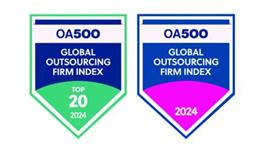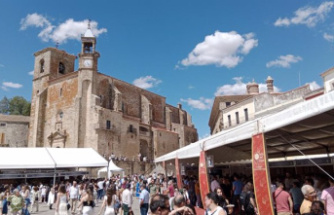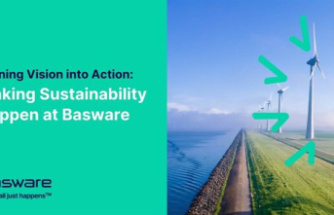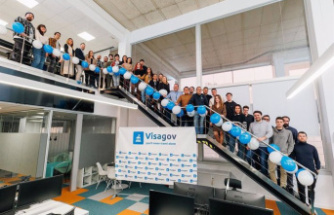One problem with global warming, in the eyes of many scientists, is the same problem faced by McDonald’s and Ford and a million other consumer products.
Mind share.
Is global warming something the average person thinks much about? Does anybody think it’s something they can do anything about, especially when there are bigger industrial contributors?
To be sure, this is only part of the problem. Scientists generally agree that the increasingly likely effects of global warming – everything from rising seas and extreme storms and droughts to the spread of diseases and starvation – are, in fact, bigger hurdles.
But mind share -- getting people to feel personally connected -- is the first step to stemming its effects.
And the reason has to do with the problem itself. Global warming is such a big concept – so potentially catastrophic and life-changing, so seemingly impossible to prevent – that it’s tough for people to see how they fit into the problem.
Enter virtual reality.
The technology that’s re-shaping computer gaming and entertainment (and, soon, medicine, communication and retail) is the hot new tool for scientists who explain to non-scientists the consequences of human behavior on the atmosphere.
That’s why scientists from a variety of institutions and disciplines are turning to virtual reality to help turn a huge idea into something that regular people can think about.
“VR is bridging the gap,” said Nick Sadrpour, a science, research and policy specialist with the Sea Grant program at USC.
The technology, Sadrpour explained, is helping make the link “between climate change being a remote impact for folks, to being something a little more personal.”
Mind games
In November, the USC Sea Grant, in partnership with the U.S. Geological Survey, set up a virtual reality headset on the Santa Monica Pier.
Dubbed the Owl, the lenses of the mounted binoculars showed four projections including what the beach looked like in the 1920s, what it could look like in a big storm under current conditions and then, with sea level rise, what a major storm could do to the beach in the future.
The most severe of these scenarios showed a beachfront restaurant with waves climbing up the windows and sea water out to Pacific Coast Highway. The last image in the series illustrated how the shoreline can be restore with sand dunes and native grasses to prevent flooding the way it was before human intervention.
“If you have someone on a beach or in a marsh or wetland and say ‘if you were standing here in the future you might have water up to your knees’ – it’s a powerful message to get across,” Sadrpour said.
It’s a way of hacking your brain. Virtual reality is capable of convincing a user they’re elsewhere, in a forest or even a field as a cow, in ways other mediums just don’t cut it.
“It doesn’t take much to trick your brain into feeling you’re somewhere else,” said Matt Bailey, director of communications and ecosystem development at UC Irvine’s Applied Innovation, which connects the school’s research projects with practical uses in the business and scientific communities.
“If you’re not in an immersive environment, it’s easy to disassociate a bit. When you put on a VR headset it fools your senses. ... Your brain still feels like you’re somewhere other than where you’re standing.”
It’s a technique Jeremy Bailenson knows well. The Stanford University psychology professor has been researching how humans consume virtual reality since the late 1990s. In 2003, he created the Virtual Human Interaction Lab, which explores how virtual reality can change people’s behavior.
In one study the lab tapped into virtual reality to teach the effects of deforestation. As part of the research a group of people were told about the process of manufacturing toilet paper, and how that process can damage forests.
Participants were then separated into three groups. In one, people read a florid passage about trees being cut down. In another, they watched a first-person video from the perspective of a lumberjack cutting down a tree. In the third, participants wore virtual reality goggles and held a vibrating stick that simulated the force of holding a chainsaw while cutting down a tree.
The only people to alter their toilet paper consumption was the group of people who virtually cut down the tree, Stanford researchers discovered.
“Our work in encouraging environmental awareness and behavior is really quite special,” Bailenson said.
The lab also teaches people about ocean acidification – the killing of ocean life because of greenhouse gases absorbed into the ocean – by transporting people via virtual “field trips” to underwater ecosystems being destroyed.
Southern California’s future
With the kinds of immersive research done by oceanographer Juliette Finzi Hart people don’t need to leave their home or buy expensive equipment to experience climate change.
As part of her work with the U.S. Geological Survey, Finzi Hart visits parts of Southern California that are already flooding, from Huntington Beach to Malibu, capturing images of ocean water creeping into streets and waves crashing near buildings.
“Bringing that world to you, and letting you have that visceral experience within your own office or living room, is a really big... part of it,” Finzi Hart said.
“It’s about helping them understand there are actions you can take.”
Using a special device on loan from Google, a camera outfitted with 16 GoPro devices, she creates 360 degree videos that she uploads to YouTube. Anyone with a smart phone can scan one of the many neighborhoods she’s captured, including those in Long Beach, Redondo Beach and Manhattan Beach. Using a $15 Google Cardboard device, the scenes becomes even more realistic.
Filming the ways in which local communities are already being changed is a way to illustrate that climate change is not a remote, distant possibility.
The work, Finzi Hard added, isn’t fiction.
“It’s real. The future is happening right now.”
Contact the writer: lawilliams@scng.com
Our editors found this article on this site using Google and regenerated it for our readers.













